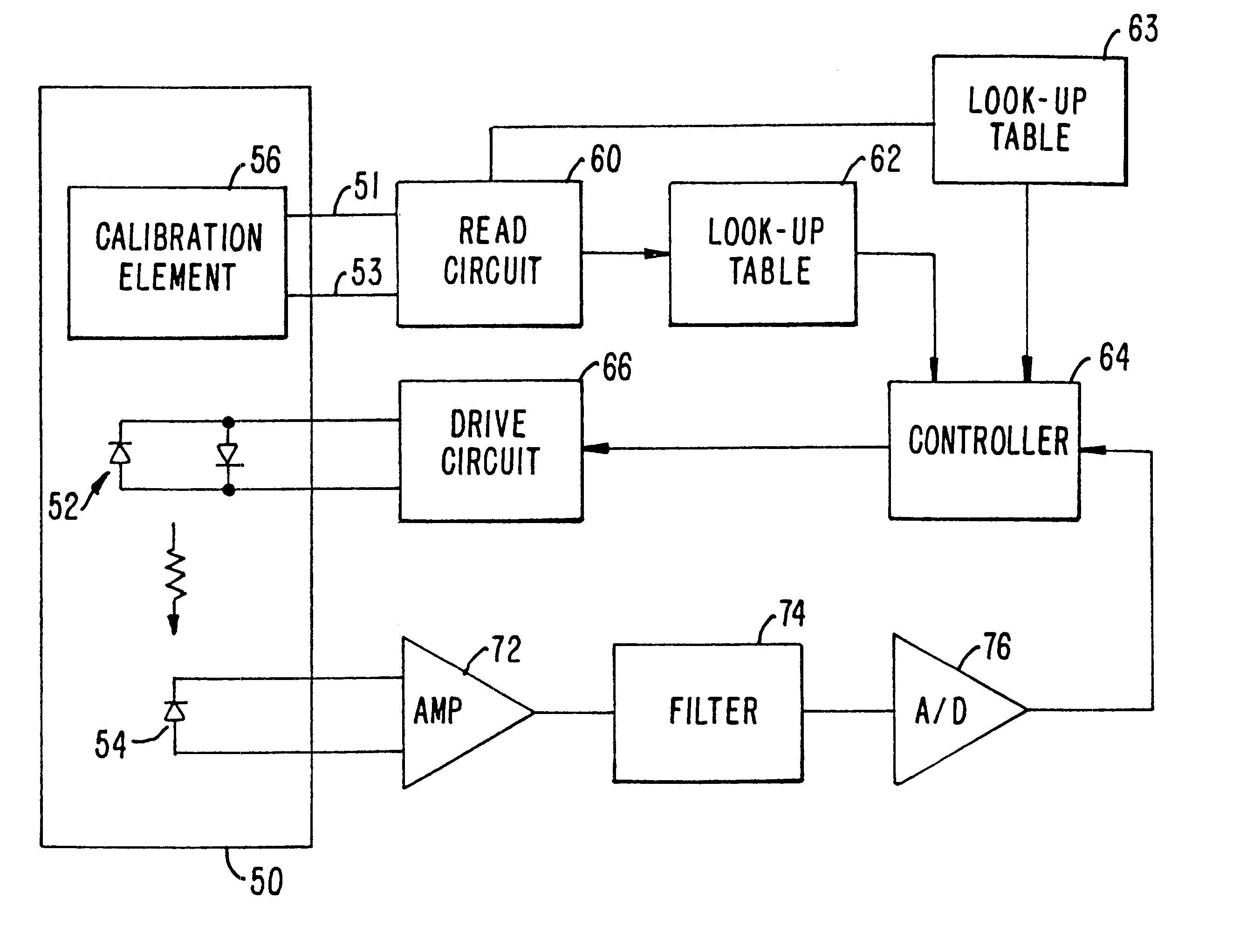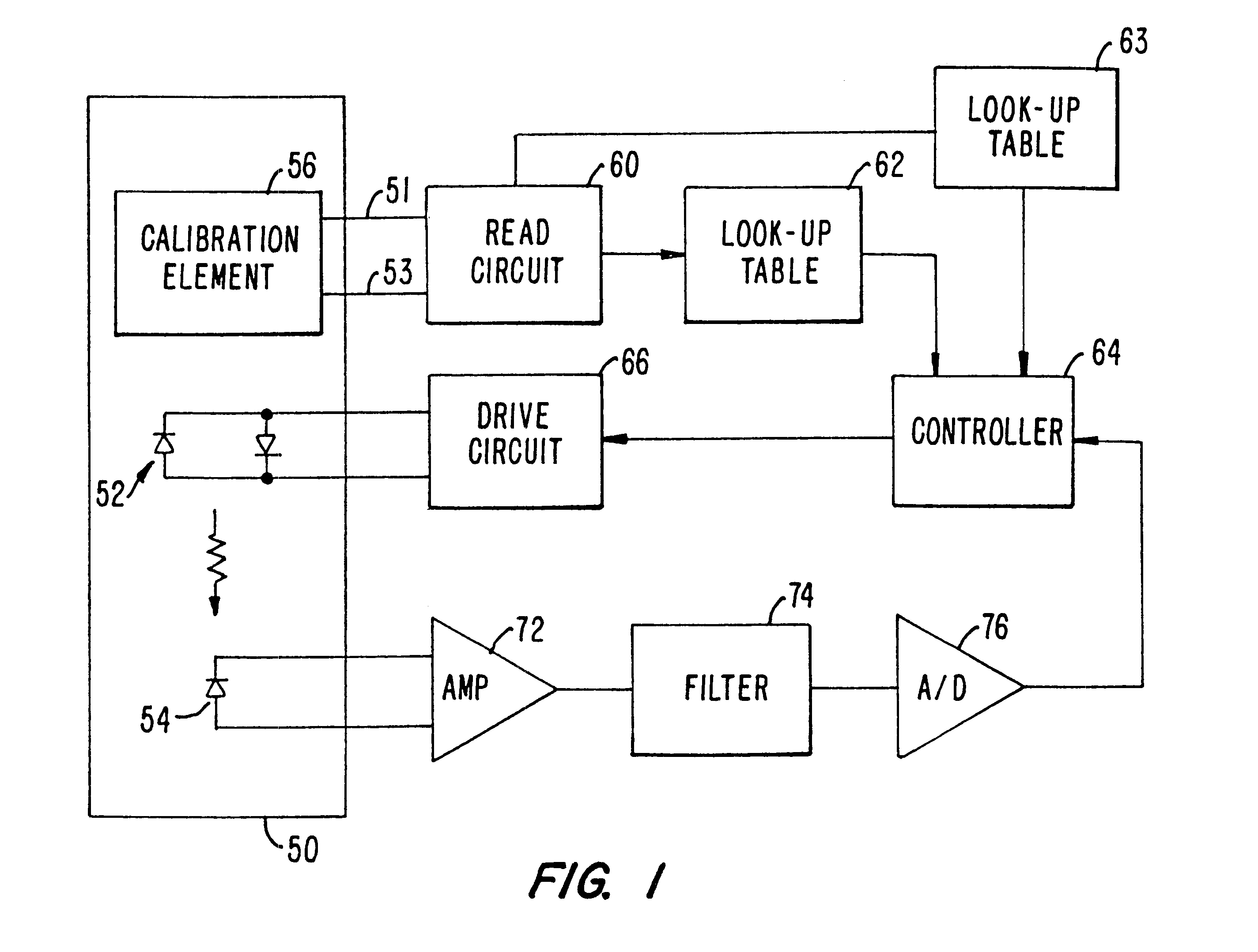Oximeter sensor with digital memory storing data
a technology of oximeter and digital memory, applied in the field of pulse oximeter sensors, can solve the problems of insufficient coding resistor coded value of wavelength of red led provided by coding resistor, complex circuitry, and many requirements, and achieve the effect of enhancing the capabilities of the oximeter sensor and enhancing the performance of the oximetry system
- Summary
- Abstract
- Description
- Claims
- Application Information
AI Technical Summary
Benefits of technology
Problems solved by technology
Method used
Image
Examples
Embodiment Construction
FIG. 1 is a block diagram of a pulse oximeter system incorporating a calibration memory element 56 according to the invention. In one embodiment, memory element 56 is a two-lead semiconductor digital memory chip. The calibration element is part of the sensor 50 which also includes red and infrared LEDs 52 as in the prior art, along with a detector 54. If desired, LEDs 52 may be replaced with other light emitting elements such as lasers.
The oximeter includes read circuit 60, drive circuit 66, look-up tables 62 and 63, controller 64, amplifier 72, filter 74, and analog-to-digital converter 76. Read circuit 60 is provided for reading multiple coded values across the two leads 51, 53 connected to calibration element 56. One value is provided to a look-up table 62 to determine appropriate wavelength dependent coefficients for the oxygen saturation calculation, as in the prior art. The other value(s) are then provided to another look up table(s) 63 which provides input (e.g., coefficients...
PUM
 Login to View More
Login to View More Abstract
Description
Claims
Application Information
 Login to View More
Login to View More - R&D
- Intellectual Property
- Life Sciences
- Materials
- Tech Scout
- Unparalleled Data Quality
- Higher Quality Content
- 60% Fewer Hallucinations
Browse by: Latest US Patents, China's latest patents, Technical Efficacy Thesaurus, Application Domain, Technology Topic, Popular Technical Reports.
© 2025 PatSnap. All rights reserved.Legal|Privacy policy|Modern Slavery Act Transparency Statement|Sitemap|About US| Contact US: help@patsnap.com


